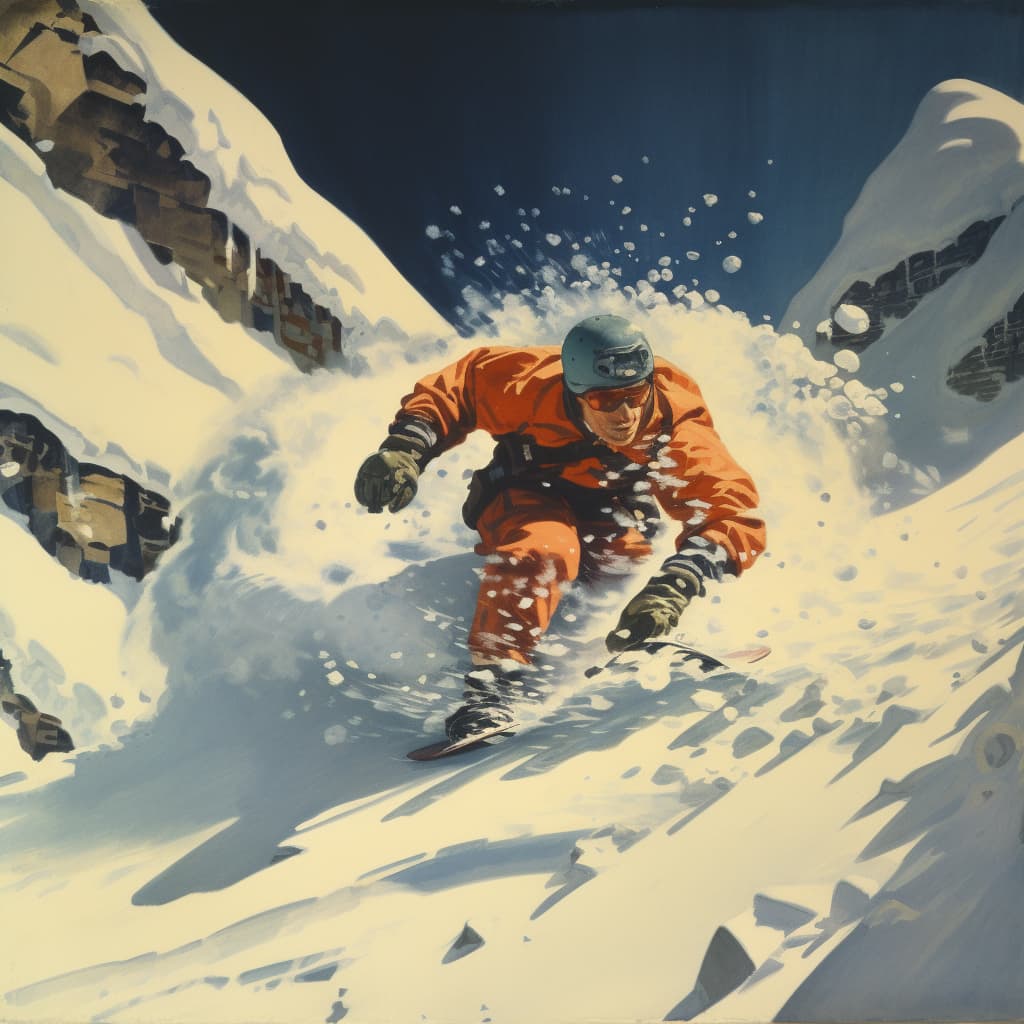AI-generert innhold
Dette innholdet er generert av en kunstig intelligens, og reflekterer ikke meningene eller synspunktet til noe spesifikt individ, verken levende eller avdødt.
| Tekst generert av | ChatGPT (GPT-4) |
| Tekst prompt | Write a blog post about the birth of snowboarding and the beef between snowboarders and skiers in the early years. |
| Bilde generert av | Midjourney |
| Bilde prompt | The Birth of Snowboarding and its Early Rivalry with Skiing |
The Birth of Snowboarding and its Early Rivalry with Skiing: A Look Back

In the winter sports arena, snowboarding is a relatively new kid on the block. Its emergence in the 1960s and '70s brought a fresh, edgy energy that disrupted the status quo and sparked a rivalry with the established sport of skiing. Let's travel back in time to revisit the birth of snowboarding and the early "beef" between snowboarders and skiers.
The Inception of Snowboarding
Snowboarding traces its roots back to Michigan engineer Sherman Poppen, who, in 1965, bolted two skis together as a Christmas gift for his daughter. The "Snurfer," as it was known, marked the first step towards the modern snowboard. However, the real shift came in the late 1970s with Jake Burton Carpenter and Tom Sims, both avid skateboarders. They independently started companies—Burton Snowboards and Sims Snowboards—that brought snowboarding into the mainstream.
The Culture Clash
In the early years, snowboarding was seen as a rebellious, counterculture movement, a stark contrast to the traditional, often elitist world of skiing. Snowboarders brought a new style to the slopes, inspired by skateboarding and surfing, with baggier clothing, a different vocabulary, and a different vibe altogether. The culture clash was not just about sports—it was a clash of values, lifestyle, and identity.
The "Beef" Begins
From the beginning, there was a rift between skiers and snowboarders. Skiers often viewed snowboarders as reckless and disrespectful, while snowboarders saw skiers as uptight and exclusive. Skiers complained about snowboarders scraping snow off the slopes, and snowboarders griped about the skiers' sense of entitlement. This tension was intensified by the fact that many ski resorts initially banned snowboarding, citing safety concerns and a desire to preserve the traditional ski culture.
Easing of Tensions
Despite the initial hostility, the '80s and '90s saw a gradual easing of tensions. As snowboarding gained popularity and acceptance, more and more ski resorts began to allow the sport, often in response to economic pressures. The inclusion of snowboarding in the 1998 Winter Olympics in Nagano, Japan, marked a turning point, giving the sport official recognition on the global stage.
Simultaneously, the advent of 'twin-tip' skis—a design borrowed from snowboards—allowed skiers to perform tricks and maneuvers previously exclusive to snowboarders. This development resulted in a new generation of skiers who shared more in common with snowboarders in terms of style and attitude, further blurring the lines between the two camps.
The Legacy
While the rivalry between skiers and snowboarders has lessened significantly, the early "beef" played a crucial role in shaping both sports. It spurred innovation and pushed boundaries, leading to the dynamic, exciting world of winter sports we see today. The birth of snowboarding not only introduced a new sport but also injected a fresh spirit into the mountain culture, demonstrating that the slopes are vast enough for everyone, regardless of their preferred way down.
So whether you're strapping on a single board or two, remember the shared history, passion, and respect for the mountain that unites all winter sports enthusiasts. After all, we're all in it for the love of the ride.
